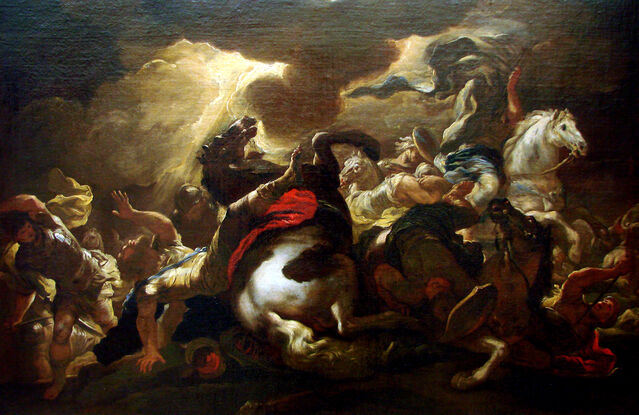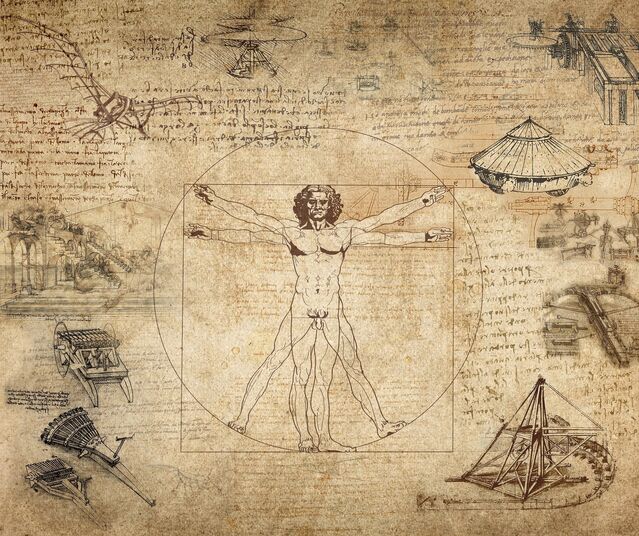Bipolar Disorder
An Atheist Neuroscientist Finds Faith in Bipolar Mania
Why does bipolar mania cause hyper-religiosity, even in a nonbeliever like me?
Posted January 23, 2021 Reviewed by Matt Huston

I kicked off my shoes and sat them next to the door of the temple, glad that I remembered not to wear the socks with a hole in the toe.
Inside, I was alone in the large open room. Hidden speakers softly filled the air with the sound of monks chanting in Vietnamese. The walls and corners were awash in color, from brightly hued banners to vivid murals depicting sacred scenes.
I mimicked what I’d seen others do on my earlier visits – I walked to the front of the room and dropped a dollar into a slot for donations. I lit a stick of incense and stuck it upright in a box of sand. The woody smell of the smoke blended with the sweet scent of the dozen or so purple and white orchids on the altar.
I walked to the center of the room and turned back towards the front to face the enormous Buddha statue behind the altar. I knelt on the floor and looked up at the Buddha’s face, suddenly realizing that in this position he was looking right into my eyes. I whispered, “Please give me strength,” and quietly wept.

Epiphany or Delusion?
I am not Buddhist. But I am bipolar. Two years ago, I was diagnosed with Bipolar I disorder after more than 20 years of being treated for major depression and anxiety. In retrospect, there were signs over the years that I was actually bipolar, but it wasn't until I experienced a severe manic episode lasting several months that the true nature of my condition became clear.
It was during that manic episode that I started frequenting the Buddhist temple near my house. I also began to revisit the Catholic faith of my youth; before my personal and academic explorations into the nature of what makes us who we are had rendered me a nonbeliever.
At first, I approached my renewed interest in religion and spirituality much like an anthropologist would examine the belief systems of some foreign culture. What psychological and sociological factors drive people to believe what they do? How did historical forces shape the spread and evolution of major religions? Are our brains hardwired to predispose us to believe in... something?
But then my thought processes started to shift. My mania was increasingly filling me with unbridled energy. I felt stronger and faster. My senses were heightened, like everything had suddenly switched to high definition. My mind raced at lightning speed, making all sorts of creative and meaningful connections that I wanted to share with those around me—if they could just keep up when I tried to explain things to them.
Was this how religious prophets felt? Was I some kind of modern-day prophet? Was this how the Buddha or Jesus felt? Was I—?
Careful.
If I started talking like that, I was afraid I’d be labeled schizophrenic and maybe get put away somewhere. Better to write those thoughts down in one of the many notebooks I’d started keeping for reminders and to catalog my inspired ideas.
Better yet, in case anyone reads that notebook I’d better obscure those thoughts by using mirror writing like Leonardo da Vinci.
I didn’t even know I could do that.

Bipolar Disorder and Hyper-Religiosity
Hyper-religiosity during mania is experienced by many individuals with bipolar disorder, and can vary by country with regard to the prevalence of religious vs. secular attitudes.
In the U.S., it is estimated that 15%-22% of bipolar individuals with mania experience religious delusions, such as thinking that demons are watching them or that they are Christ reborn. However, short of delusions, hyper-religiosity can be hard to identify among those actively practicing a faith.
Many people turn to the comfort of their faith to help them through trying times, so an uptick in religious thought and activity can be viewed by family, friends, and even mental health providers as a normal response to one’s illness. It’s only when behavior falls outside of social norms that it becomes concerning.
Kanye West is arguably an example of this difficulty playing out against the backdrop of artistry and fame. Kanye’s public on-again off-again approach to medication for treating his bipolar disorder has been linked to erratic behavior.
While Kanye has referenced God and Jesus throughout his career, his adoption of the nickname “Yeezus,” statements about his single “I Am A God,” and leading of public and private worship services have been alternately interpreted as a “God complex,” an artistic device, or an evolution of his personal faith.
I never thought I’d have something in common with Kanye West. Yet there I was, on the verge of becoming some sort of dime-store Yeezus.
Seeking a Neurobiological Explanation for Bipolar Hyper-Religiosity
In the past few decades, several highly publicized research studies have claimed to find “God spots” in the brain—distinct areas, usually in the temporal or parietal lobes, thought to be responsible for spirituality.

Subsequent research has thrown cold water on such claims, instead supporting the idea that such a complex phenomenon as spirituality involves networks of multiple brain areas responsible for different aspects of spiritual experiences.
For example, it now appears that parts of the parietal lobe are associated with feelings of spiritual transcendence, parts of the temporal and frontal cortices are involved in the storage and retrieval of religious beliefs in memory, and still other parts of the frontal lobe and limbic structures are responsible for rational and emotional aspects of religious beliefs.
In later posts*, I will go into more detail about what is known regarding how specific brain regions contribute to religious cognition, the difference between religion and spirituality when it comes to this type of research, and how religiosity in Parkinson’s Disease patients provides insight into the neurobiological basis of hyper-religiosity during bipolar mania.
Spoiler alert: it involves dopamine.
*In lieu of subsequent posts, a feature length version of this article appeared in the May 2021 issue of Psychology Today.
References
Pesut, B., Clark, N., Maxwell, V. & Michalak, E.E. (2011). Religion and Spirituality in the Context of Bipolar Disorder: A Literature Review. Mental Health, Religion & Culture, 14(8):785-796, DOI: 10.1080/13674676.2010.523890.
Grafman, J., Cristofori, I., Zhong, W., & Bulbulia, J. (2020). The Neural Basis of Religious Cognition. Current Directions in Psychological Science, 29(2):126-133, DOI: 10.1177/0963721419898183.
Koenig H.G. (2007). Religion, Spirituality, and Psychotic Disorders. Revista de Psiquiatria Clínica, 34(1):40-48, DOI: 10.1590/S0101-60832007000700013.
Ouwehand, E., Braam, A.W., Renes, J.W. et al. (2020). Holy Apparition or Hyper-Religiosity: Prevalence of Explanatory Models for Religious and Spiritual Experiences in Patients with Bipolar Disorder and Their Associations with Religiousness. Pastoral Psychology, 69:29–45, DOI: 10.1007/s11089-019-00892-3.




